Earlier this week we picked up a Samsung Galaxy S20 Ultra and did a feature overview to see if it's worth $1,400, but we also thought we'd take a deeper look at Samsung's newest smartphone to see how the cameras measure up to the cameras in Apple's iPhone 11 Pro Max.
Hardware Details
Samsung's Galaxy S20 Ultra, like the iPhone, has a multi-lens rear camera setup. There's a 108-megapixel wide-angle camera, a 12-megapixel ultra wide-angle camera, a 48-megapixel telephoto camera, and a DepthVision Camera for portrait shots.
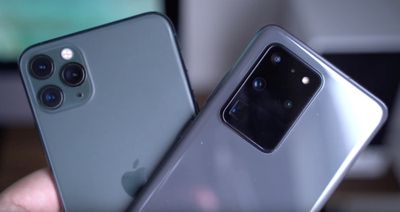
For comparison's sake, the iPhone is sporting a 12-megapixel ultra wide-angle camera, a 12-megapixel wide-angle camera, and a 12-megapixel telephoto camera.
Portrait Mode
When it comes to Portrait mode photos, the Galaxy S20 Ultra wins out thanks to that depth sensor. There's not a major difference, but the images coming from the S20 Ultra appear to be sharper and the edge detection is better. The iPhone does win out when it comes to dynamic range, and the S20 Ultra seems to have a bit of desaturation in some images, but overall, the S20 Ultra wins this category.

Standard Camera Tests
When it comes to standard photos using the three different lenses on each camera, we actually preferred the iPhone images for the most part because the iPhone offered more balanced color and better dynamic range, but with high-end smartphone cameras, a lot comes down to personal preference.
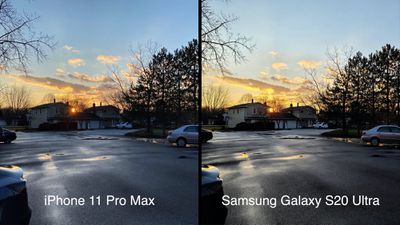
The S20 Ultra seems to be overexposing highlights in images with the sun and clouds, resulting in too much contrast. In images with less dynamic lighting, the results are closer and both look great.
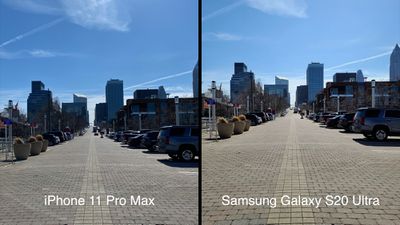
The exception here is the ultra wide-angle camera. The S20 Ultra is just producing a sharper, crisper ultra wide-angle picture, while the iPhone produces a softer image. That's not too much of a surprise, though, because the sensor of Apple's ultra wide-angle lens isn't as good as the sensor in Apple's wide-angle camera lens.
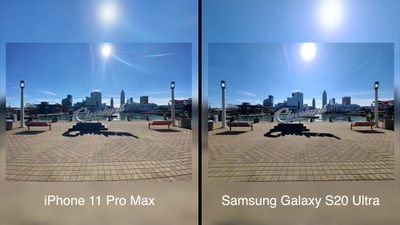
S20 Ultra Space Zoom
The Galaxy S20 Ultra has some bells and whistles worth pointing out, such as a 100X "Space Zoom" feature. The iPhone 11 Pro Max maxes out at 10X digital zoom. The S20 Ultra clearly wins here, though you're not going to get a lot of use out of 100X zoom photos.

What is impressive, though, is photos taken with the 30X zoom feature. Samsung's 30X zoom pictures are crisper and clearer than Apple's 10x zoom photos.
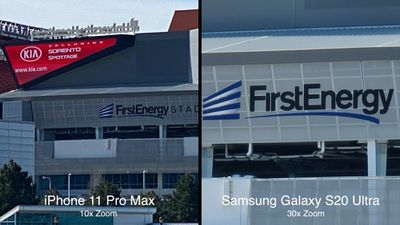
S20 Ultra Single Take
There's also a "Single Take" feature that takes photos and videos from different angles and then spits out a bunch of different options like Boomerang-style videos, pictures with filters, videos with music, and more, so you have this kind of auto editing feature that can produce some interesting photo and video options you might not have thought to do on your own.
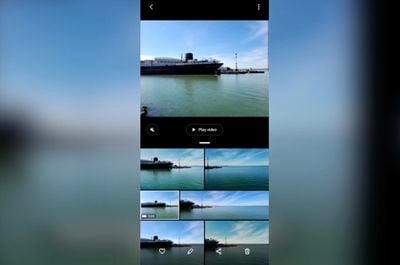
S20 Ultra 108-Megapixel Camera
We do need to mention that massive 108-megapixel camera. It definitely has focus issues at the current time, and it's hard to get it to focus.

When it does work, it can provide sharp, detailed photos that are great if you need to crop in, and it has great depth of field for some nice background bokeh.

A 108-megapixel camera produces massive file sizes, so this isn't a lens you're going to want to use often. Luckily, Samsung did built in a feature that lets it take more reasonable 12-megapixel photos.
Night Mode
Both phones have a Night Mode, and both Night Modes work fairly well. On the Galaxy S20 Ultra, it's a mode you need to enable that's not turned on by default, which is a bit of a hassle.
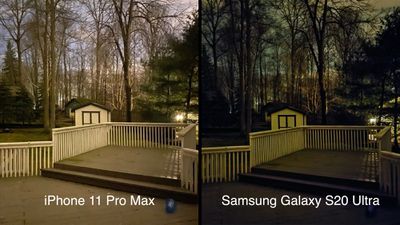
The iPhone seems to have better HDR processing and delivers a more usable photo in extreme low lighting conditions. In situations with just a bit more light, though, it's a wash - both produce nice images.
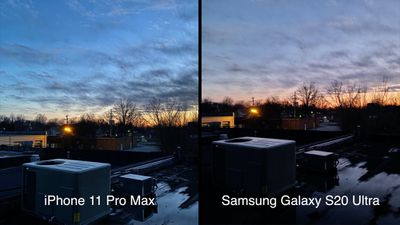
Video Comparison
One of the Galaxy S20 Ultra's major new features is 8K video, which is higher quality than the 4K video offered by the iPhone. 8K video from the S20 Ultra looks great, but image stabilization is poor, which means the 8K video is not as good as it sounds on paper.
When comparing 8K video from the S20 Ultra to 4K video shot on the iPhone 11 Pro (both at 24 frames per second because that's the max for the S20), the S20 Ultra's crop factor, rolling shutter, and lack of stabilization are highly noticeable.
Pitting 4K video against 4K video (at 60fps), both cameras perform similarly in terms of stabilization and focus, though the iPhone 11 Pro Max seems to be just a bit more stable. Both are just about equal, though.
Front-Facing Camera
As for the front-facing camera, there's a 40-megapixel selfie camera with an f/2.2 aperture in the Galaxy S20 Ultra, while the iPhone 11 Pro Max features a 12-megapixel camera with an f/2.2 aperture.
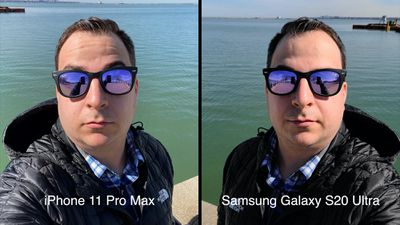
You might think the 40-megapixel camera is significantly better, but we didn't see a whole lot of difference between the S20 Ultra and the iPhone 11 Pro Max. Samsung does have a "beauty mode" that we turned off, while the iPhone has no similar mode that can be toggled on.
Conclusion
In a nutshell, as with most high-end smartphone camera comparisons, there's no crystal clear winner. Both the Galaxy S20 Ultra and the iPhone 11 Pro Max have good cameras that are capable of capturing some amazing photos in good lighting conditions.
The iPhone wins out when it comes to dynamic range and video stabilization, but the S20 has better portrait mode photos. Standard point and shoot images are going to come down to personal preference, so make sure to watch the video to see all of our comparisons.























